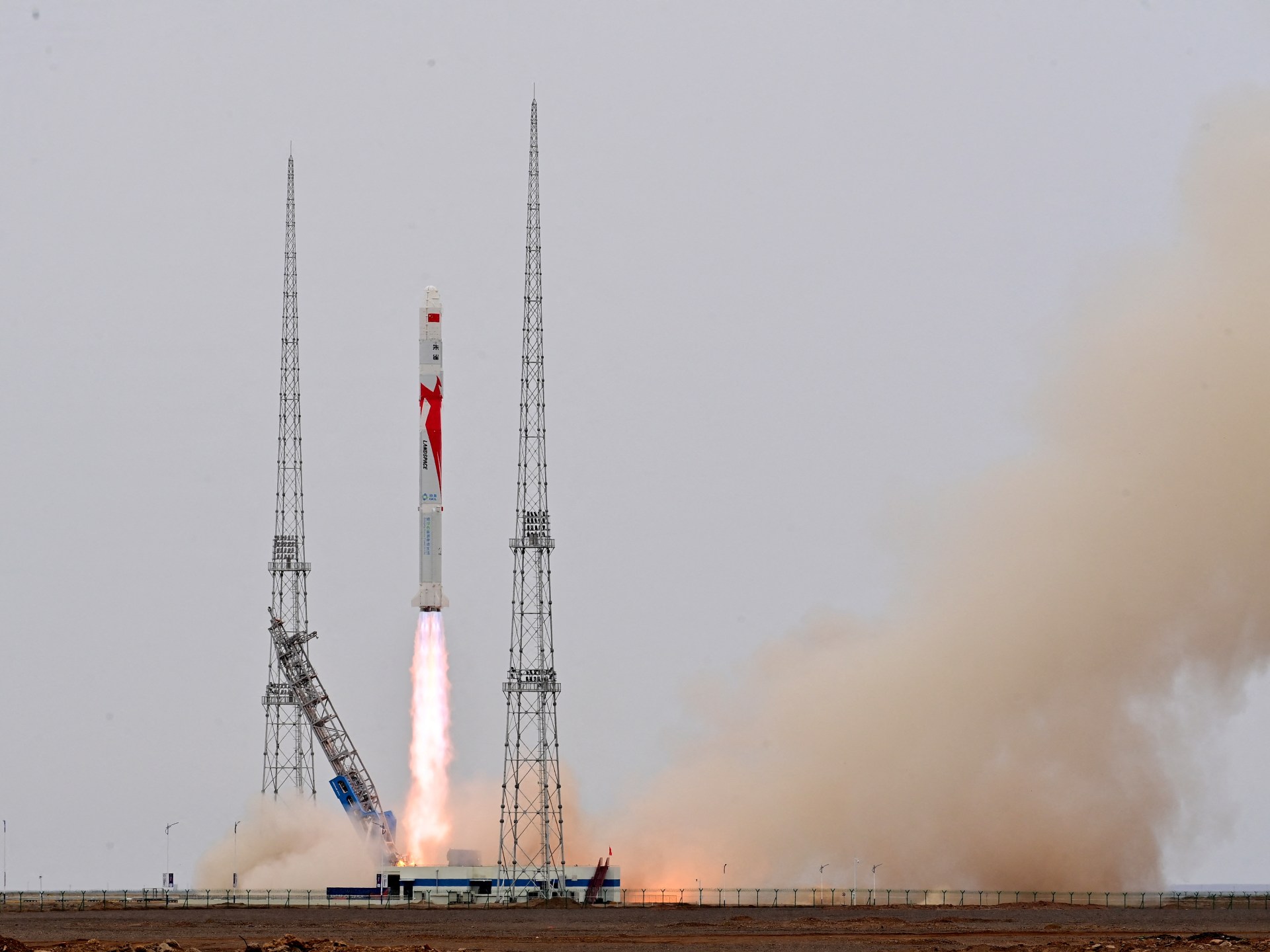Success of LandSpace Technology’s Zhuque-2 Y-3 could boost investor confidence in methane as a potential rocket fuel.
A methane-powered rocket developed by a private Chinese company has launched three satellites into orbit, a milestone in its mission to test whether the vehicle is ready for commercial liftoffs.
The success could boost investor confidence in methane as a potential rocket fuel, which is deemed able to help slash costs and support reusable rockets in a cleaner and more efficient way.
Beijing-based LandSpace Technology’s Zhuque-2 Y-3 carrier rocket blasted off at 7:39am on Saturday (11:39 GMT on Friday) from Jiuquan Satellite Launch Center in China’s Inner Mongolia region, becoming the first methane-powered rocket to succeed in lifting satellites.
The methane-liquid oxygen rocket is also deemed to be less polluting, safer, cheaper and a suitable propellant for a reusable rocket.
In July LandSpace became the world’s first company to launch a methane-liquid oxygen rocket, ahead of United States rivals including Elon Musk’s SpaceX and Jeff Bezos’s Blue Origin.
After Saturday’s launch, LandSpace said the two launches have shown that Zhuque-2 is reliable enough for commercial launches.
The company added that the three satellites it launched reached 460km (285-mile) sun-synchronous orbit, without providing details on the types and overall weight of them.
🎉Congratulations to LANDSPACE for the remarkable success of Zhuque-2 Y3! In July, it made history as the world’s first LOX/CH4 rocket to achieve orbital launch, and now it sets another milestone as the first to successfully deploy payloads in orbit. Way to go Methane rocket! pic.twitter.com/0eGm7TLfhA
— CNSA Watcher (@CNSAWatcher) December 9, 2023
Zhuque-2 Y-3 carried two 50kg test satellites developed by Chinese startup Spacety, one of which has adopted technologies from a company named Hongqing, according to a Spacety statement on Saturday.
Hongqing said in a statement that the rocket also carried one of its test satellites, without disclosing the weight, and added that the two Hongqing-linked test satellites in Saturday’s launch are designed to support forming a low-orbit satellite constellation.
Chinese commercial space firms have rushed into the sector since 2014, when the government allowed private investment in the industry.
LandSpace said it plans to provide clients with about three launches in 2024 and double that in 2025.
Other Chinese startups like OrienSpace and Galactic Energy have also launched or lined up satellites into orbit in the coming months.
Check out our Latest News and Follow us at Facebook
Original Source

